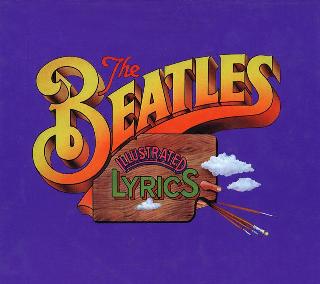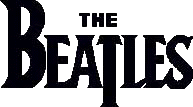Index
Home
Vorige
Martha My Dear
Composer(s) : Lennon and McCartney
Year : 1968
Chords/Tabs: Martha My Dear
Notes on "Martha My Dear" (MMD)
KEY Eb Major
METER 4/4
FORM Intro -> Verse -> Bridge -> Bridge Extension ->
Verse (Instrumental) -> Bridge ->
Verse -> Outro (w/ complete ending)
GENERAL POINTS OF INTEREST
Style and Form
- Don't be fooled: the gracious surface charm of this song is more
substantively belied by novel touches in the departments of form,
phrasing and harmony than you might ever notice without a closer
look.
- The form is complicated, albeit in subtle terms:
- A larger than average quotient of precious bandwidth is monopolized
by purely instrumental music; i.e. the long intro, mid-section break,
and outro.
- That instrumental intro encompasses one complete verse section,
thus "forcing" the unusual deployment of only a single sung verse
before the first bridge. Similarly, the instrumental verse section
in the middle "forces" the final verse to be the only other sung
verse in the entire song.
- Though the piece includes two bridges, the first one includes an
extension that is cavalierly ommited the second time 'round.
- The verse includes a Charleston-like syncopated repeat of the first
melodic fragment, thereby setting up an assymetrical interpolation of
2 excess beats within the first line of the song. Paul would much
later employ a variation of this same technique in
"Two Of Us;" listen
(I command you!) to the early runthroughs of the latter (the first
track on the venerable Songs From The Past, volume 4 in which
Paul adjures his colleagues to listen to how well "it works" as
he "rhythms it" for them, demo style.
Melody and Harmony
- The home key is a jazzy, blues-inflected dialect of Eb Major
in which a lot of different chords are used, a larger quotient
than average of which appear with freely dissonant embellishments.
- The bridge is set in the key of F Major, the modulation made out
to sound more remote than it really is by the manner in which it
is abruptly entered and exited.
Arrangement
- The piano that opens the piece, played drily with NO pedal and
closely miked, runs beneath most if not all of the track, but the
Beatles convention of instrumental layering is also very much in
evidence:
Verse 1 -- Add light strings to underscore piano solo.
Bridge 1 -- Add brass chords on the first and third beats of each
measure, with string chords on EVERY beat.
Bridge extension -- Add drums (their first appearance on the track)
and note how the bass, which just may have joined in earlier becomes
more noticeable here.
Instrumental Solo -- The tune is carried here by a trumpet. In
the meanwhile the drums drop out but the bass continues on, and
you can now hear hand claps in the backing part.
Bridge 2 -- Similar to the Bridge 1, but note how the drums show
up here this time around; previously, they were held in reserve for
the so-called extension.
Final verse -- No drums, no brass, but the bassline is ever more
prominent.
Outro -- For just strings and bass.
- This arrangement features three enduring signature details; i.e.
you'd recognize what song they came from no matter how brief the
sound bite in which you might hear them:
- The A->Bb grace note in the piano part just before the downbeat
to the 3rd phrase of the verse.
- The horn fanfare at the end of the bridge and bridge extension.
- The bassline accented in "Bulgarian" rhythm (3 + 3 + 2) for the
2nd phrase of the bridge. Paul's own precedent for this device
to-date is "Good Day Sunshine,"
but on _Abbey Road_ you'll find
George using it in
"Here Comes The Sun" and John using it in the
intro to "Because."
SECTION-BY-SECTION WALKTHROUGH
Intro
- The intro/verse section is an extremely unusual 14.5 measures
in length, the first of its four phrases being foreshortened
by 6 beats; the musical equivalent of a receding chin :-)
In this case, the effect is motivated by the dog-chasing-its-tail
motif with which the tune opens:
|Eb |- |- D |
Eb: I V-of-iii
|g |C |F |- |
iii V-of-(V-of-V) V-of-V
|Bb |Ab9 |Bb7 |Ab7 |
V IV V IV
|Bb7 |Ab7 |Bb7 |- |
V IV V
- Well before the true Eb home key is established, the section
veers off sharply in the direction of a possible modulation to
the key of Bb Major. Though the Bb chord becomes clearly
established by section's end as "V," not "I," you still might
say that the tonal center of gravity is weighted deceptively
more in favor of Bb rather than Eb.
- The 9ths and 7ths applied to all of the Ab Major chords above
fall under the category of 'free' dissonance.
Verse
- It's the intro revisited.
Bridge
- The bridge, proper, is 16 four-square measures long and appropriately
makes "atonement" for the metrical imbalance of the verse section. By
the same token, it makes its own very balls-ily abrupt harmonic shift
to the key of F Major:
|d7 |- |g7 |- |
F: vi ii
|F-added 6th|- |- |- |
I
|**bass pedal tone on C ...
|g |C |g |C A |
ii V ii V V-of-vi
|d |- |g7 |- |
vi ii
- Freely dissonant harmony continues in this section with the large
number of gratuitous 7th chords, the added-6th embellishment
of the new home key chord, and the pedal tone which is sustained
through the first three measures of the third phrase.
Bridge Extension
- This unique passage constitutes a quite natural continuation of the
bridge from which it is spawned. The harmony is of the same fabric
with its rampant free 7ths. The rather offbeat 3-measure phrasing
of the opening of this section somehow fits with that "receding chin"
gesture of the verse:
|d |G9 |- |
F: vi V-of-V
|d |G9 |- |
vi V-of-V
|C7 |- |Bb |-7 |
V IV
|d |- |g7 |- |Eb |
vi ii
Eb:iii I
- The abrupt transition back to the home key of the verse features
that root move of a Major Third that we discussed back in of all
places,
"Wild Honey Pie."
Note how the second bridge embellishes
this gesture with a novel 3->4->5 hook in the toppermost voice.
Outro
- The outro takes the rather simple way out, considering all formal
and harmonic subtlties that have been dished out all the way through
the rest of the song: the V chord that is left hanging at the end of
the final verse is allowed to simply resolve to a prolongation of
the I chord, sustained through the downbeat of the 3rd measure, but
with the remainder of four measures to the phrase clearly implied.
SOME FINAL THOUGHTS
- I'm not embarrassed to admit I'm of that generation for whom the
suggestion that this song was dedicated to the composer's sheep dog
was a disambiguating revelation.
- Furthermore, I find myself the more mystified and more than a bit
dismayed by Mr. Lewisohn's revisionist attempts to tell us all that
it's NOT about a a dog, after all.
- Leave well enough alone and give us a break, I say. A dog may
fine, Paulie, but you'll never connect with a real woman with that
"hold your head up/silly girl" kind of foolish line.
Regards,
Alan (awp@world.std.com)
---
"Mind you, I stood up for you, I mean I wouldn't have it." 120797#137
---
Copyright (c) 1995 by Alan W. Pollack
All Rights Reserved
This article may be reproduced, retransmitted, redistributed and
otherwise propagated at will, provided that this notice remains
intact and in place.
Ook op The Beatles [White Album]:
(c) 2024 Serge Girard


 (c) Alan Aldrigde, The Beatles Illustrated Lyrics
(c) Alan Aldrigde, The Beatles Illustrated Lyrics